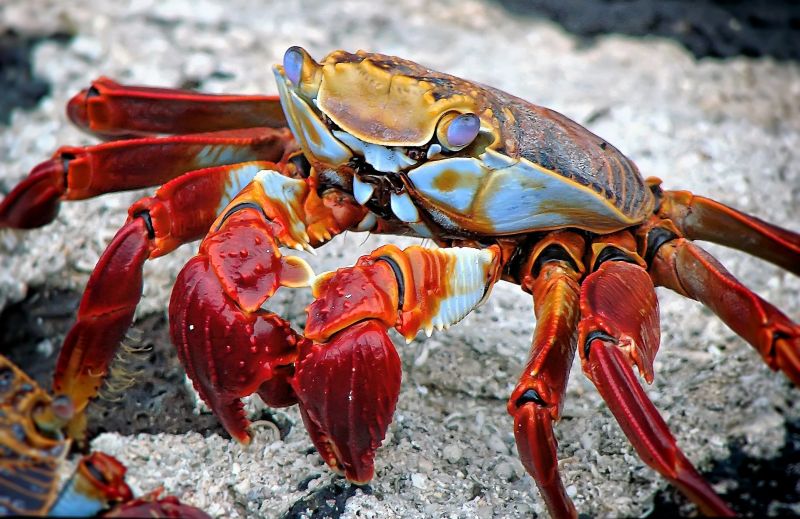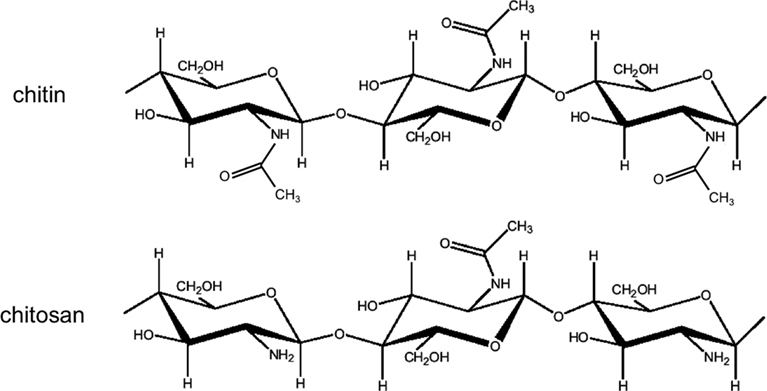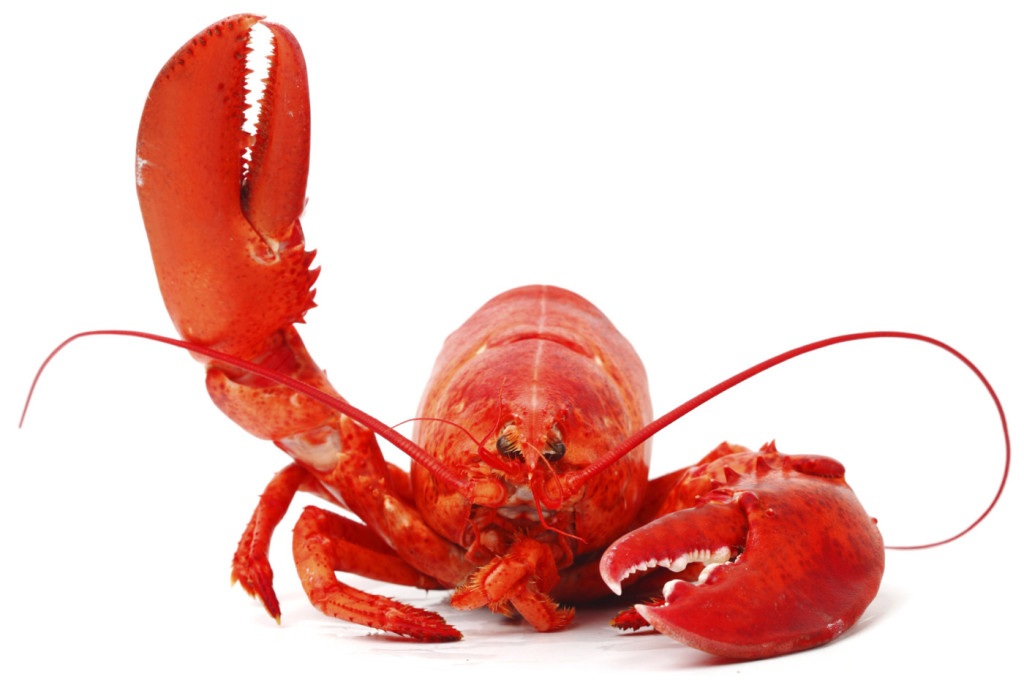Do you know the biopolymer that has regenerative properties and is found in the shell of crustaceans?
science·@bape682·
0.000 HBDDo you know the biopolymer that has regenerative properties and is found in the shell of crustaceans?
><center>Hello Steemit! This time I want to tell you about ***chitosan***, a biopolymer produced from the chitin found in ***the shell of marine crustaceans***. In this Post I will tell you about this material that is being the center of many researches and that currently has many applications. I hope you enjoy it.</center> <center> <a href="https://www.animales.website/wp-content/uploads/2017/01/Cangrejo.jpg">Crustacean</a> </center> ## <center>***Chitosan***</center> <center>***Chitosan*** is a copolymer composed of 2-acetamido-2-deoxy-β-D-glucose and 2-amino-2-deoxy-β-D-glucose units linked by β- (1 → 4) bonds (Figure 1). It is produced from ***chitin***, being a ***natural polysaccharide***, which is found in the shell of crabs, shrimp, lobsters, butterflies, ladybugs, mushrooms and fungi. Shells of marine crustaceans are widely used as primary sources for chitosan production. This biopolymer, in contrast to chitin, is very rarely present in nature. It can be found naturally in the walls of some plants and fungi. However, the most important source of chitosan at the industrial level is chitin, which through a ***chemical or enzymatic deacetylation process*** has allowed it to be produced on a big scale (Lárez et al., 2006).</center>  <center> <a href="https://www.intechopen.com/books/biological-activities-and-application-of-marine-polysaccharides/chitosan-in-agriculture-a-new-challenge-for-managing-plant-disease">Chitin and Chitosan (Orzali *et al*., 2017)</a> </center> <center>The cationic properties of chitosan offer good opportunities to take advantage of the interaction that their electrons can establish with numerous compounds. The presence of amine groups in the polymer chain has made chitosan ***one of the most versatile materials*** that can be studied because of the possibility of making a wide variety of modifications(Shahidi et al., 2005). Chitosan is also susceptible to chemical modifications due to the hydroxyl group, so it has been described as one of nature's most versatile biomaterials, because it possesses ***unique properties such as its biocompatibility, biodegradability, low toxicity and low cost.***</center> ## <center>***Applications of chitosan***</center> <center>The industrial applications of chitosan are very diverse, these include its use as an ingredient in ***cosmetic products related to the care of hair and skin, toothpaste and mouthwashes***. Due to its fungistatic properties, applications in water treatment are due to the polycatalytic nature of chitosan, being used as a flocculating and chelating agent or adsorbing proteins, organic compounds and heavy metals (Dutta et al., 2002).</center> <center> In relation to its ***biomedical, pharmaceutical and biotechnology applications***, its applications in the treatment and wound ***healing stand out***. Chitosan-based materials, produced in different formulations, have been used in a number of applications in wound healing, inducing and reducing scarring of the scars, because chitosan activates immunocytes and inflammatory cells; In addition to serving as anticoagulant, antithrombogenic and hemostatic agents (Azad et al., 2004).</center> <center> <a href="http://blog.nutritienda.com/wp-content/uploads/2016/04/Quitina-1024x682.jpg">Crustacean</a> </center> <center>Recent research indicates that ***chitosan accelerates wound healing***, which makes it attractive for the delivery of bioactive agents such as antibiotics or growth factors to the local implant-tissue interface, to prevent infection of the implant and to stimulate the formation of new tissue. Because of these properties, chitosan -based materials are receiving a lot of attention for a wide range of utilities, including coatings to promote the integration of dental implants into the bone and as an engineered material to ***regenerate missing bone tissue due to disease*** ( Anwar et al., 2015). </center> <center>The excellent general properties of this biopolymer makes it the center of many research in the search for new biodegradable and biocompatible materials.</center> <center> If you liked the post and want to continue seeing more articles of this type, upvote, follow me and resteem.</center> >References >Lárez, C. 2006.Quitina y quitosano: Materiales del pasado para el presente y el futuro. Avances en Química, 1(2): 15‐21. >Shahidi, F. y Abuzaytoun, R. 2005. Chitin, chitosan, and co‐products: chemistry, production, applications, and health effects. Advances in Food Nutrition Research, 49: 93–135. >Dutta, K.; Kumar, M. y Dutta, J. 2002. Chitin and chitosan for versatile applications. Journal of Macromolecular Science, 42(3): 307‐354. >Anwar, S.; Mubarik, M.; Waheed, A. y Firdous, S. 2015. Polarization imaging and characterization of chitosan for applications in tissue engineering. Optik Journal, 126: 871-876. >Azad, A.; Sermsintham, N.; Chandrkrachang, S. y Stevens, W. 2004. Chitosan membrane as a wound-healing dressing: Characterization and clinical application. Journal of Biomedical Materials Research, 69B: 216–222.
👍 bape682, unprovoked, attailah, brandylynne, justtryme90, timothyb, killuminatic, arconite, bellyrub, quintree, coinbitgold, espanol, artedellavita, banjo, minnowsupport, edrivegom, jhermanbeans, worldtraveler, starrkravenmaf, lastminuteman, pomperipossa, detlev, outerground, marcusxman, gindor, abcdoctor, shellyduncan, timbalabuch, taica, cryptohustler, jean.racines, burnedpixel, flaminghedge, vinyprop, dineroconopcion, germanaure, elyaque, cloh76, diana.catherine, raymondspeaks, stephen.king989, efrageek, tjtrusty, ebargains, steemprentice, piercetheveil, loreennaa, numpypython, choogirl, jhagi.bhai, yummymummy, shawnfishbit, kenchung, somethingsubtle, ninaflowers, andrewgenaille, n1kofi, myday, cheeto.blue, isaacfrett, benjamin.still, ogochukwu, whatamidoing, qwasert, paulag, suesa, cem, oendertuerk, sacred-agent, besteulz, marlies, afcajax, rootingrobert, cinemasins, zaman, semb, dorman, guyfawkes4-20, ma1neevent, mk40, neuerko, jacobchamplain, bluebellwalk, acidyo, roelandp, voltash, bue-witness, bue, pharesim, boy, mini, healthcare, bunny, moon, daniel.pan, helen.tan, craigslist,